Most motorcycle buyers are varying degrees of enthusiasts in their hearts. Often, strapped for want of a bigger budget, they are settling for a lesser motorcycle, while eyeing another higher up in the hierarchy of motorcycling fun. There has been that cusp segment in the entry-to-mid engine displacement performance category that has managed to whet the appetite of a lot of these bikers.
These motorcycles offer a fun riding experience, can be pushed to their limits, and can cost just a fraction of what the big bikes will need for annual maintenance. The KTM Duke 390 has been a staple amongst that subset. Its offbeat design, its rugged build, and that ability to flick it through traffic and easily pick one’s way out have been qualities that have made it popular amongst a lot of young buyers.
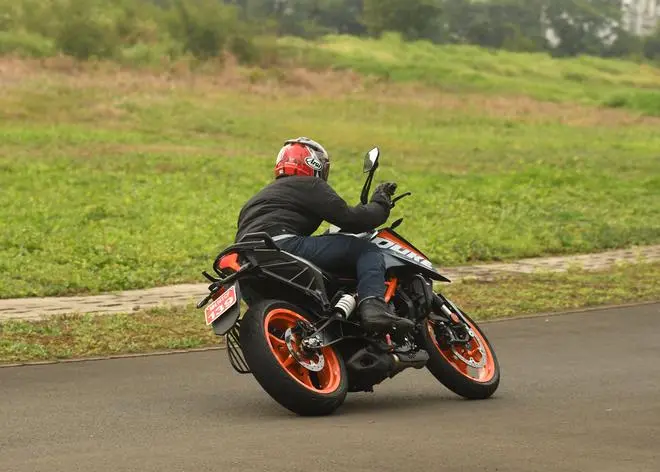
Six years after the second-gen was introduced, KTM is launching the third-gen with a complete redesign and an engineering overhaul of all the features that has endeared this motorcycle to its fans | Photo Credit: BIJOY GHOSH
Despite their relative premium positioning, KTMs have managed to build a loyal fan base. And the Duke 390 has had a particularly successful run thanks to its naked motorcycle design and its comfortable, yet relatively upright riding position. The current second-generation Duke 390 represented a step up in the evolution of the bike with a much more refined design and build, and offered quite a jump in features over the first-gen. Earlier this month, I headed to Bajaj Auto’s test track in Chakan, Pune, to test ride the latest third-gen KTM Duke 390. Is it a significant upgrade over the outgoing model? Does the 2024 Duke 390 deliver on all the key expectations of a KTM buyer?
Design and build
The KTM Duke 390 was one of the first motorcycles to deliver the characteristic forward-leaning, naked street fighter design orientation. The first generation of the Duke 390 launched in 2013 also made a few other features its own trademarks including the orange trellis frame and the underbelly exhaust. The first-gen’s design also established KTM’s defining lineage and symmetry in design, a trait which has since been emulated by others.
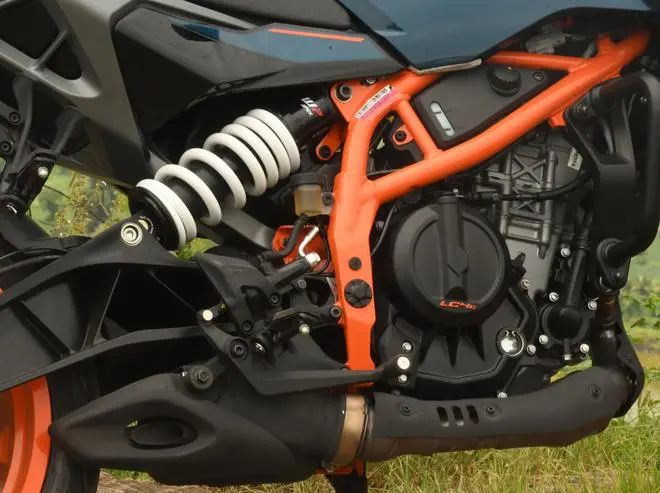
The stocky aluminium subframe at the rear stands out | Photo Credit: BIJOY GHOSH
The fuel tank with its shrouds, the low-set split headlamp, and the stepped seats for the rider and pillion etched the design’s uniqueness into the minds of buyers. The second-gen was an evolution over the first Duke 390 with a further refinement in design and build, while more features like the TFT digital screen, quick-shifter, slipper clutch and Supermoto ABS were added. Six years after the second-gen was introduced, KTM is launching the third-gen with a complete redesign and an engineering overhaul of all the features that has endeared this motorcycle to its fans.
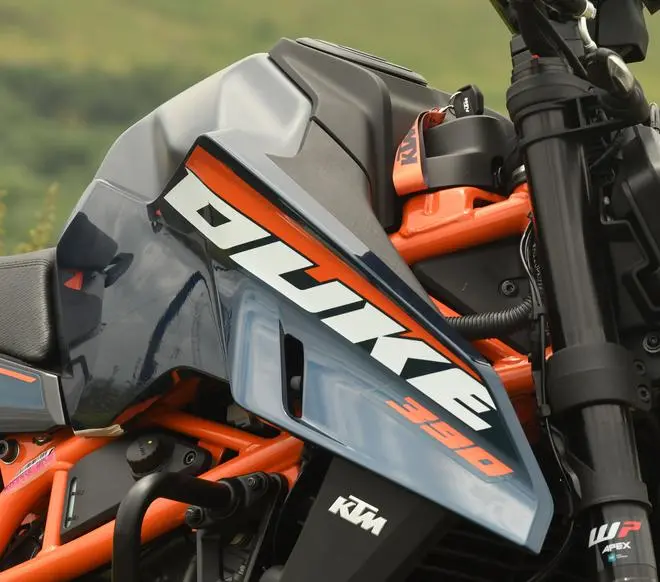
This new 2024 KTM Duke 390 is a global model that is going to be exclusively manufactured by Bajaj in India for markets all over. It has been built from the ground up with an eye to uniformity across geographies and that has meant some renewed focus on standardisation.

This has also meant that some radical changes in design and build have been executed. Two of the most obvious that you may observe from these pics are the changeover for the front disc brakes from the left to right side of the front wheel, and the offset mounting position for the rear monoshock suspension, which sticks out prominently on the right side. Some of the other design changes to the front that are likely to divide opinions are the long tank extensions and the new configuration for the LED headlamp and pilot lamps.
Design inspiration for some of these seems to have been drawn from the Super Duke. The 15-litre fuel tank design has also been changed and it is now stubbier, with a taller profile and broad blade-like extensions on either side. The seat section is now angular with a flatter, more horizontal seat angle for the pillion. The other two design and build features that stand out are the new orange trellis frame and the stocky aluminium subframe at the rear.
The third-Gen Duke 390 has been built on a completely new chassis set up. It now gets a completely redesigned tubular trellis frame with new mount points that allows for a unique off-centre position for the rear monoshock suspension. Bajaj-KTM officials say that the offset monoshock has been carefully calibrated for uniform damping behaviour and weight loads. This also allows the new Duke 390 to be offered with a class-leading ground clearance of 183mm, while it still manages a lower 800mm saddle height. In fact, I found the seat position to be perfect letting me stay close to the bike’s CG.
The new aluminium subframe swingarm with its in-built drive chain channel is also a neat change, with company officials claiming that it is a big step up in manufacturing quality. There has also been a jump in the number and quality of forged components, especially evident from parts like the triple clamp, axle clamp, brake levers, and step holders for the foot pegs.
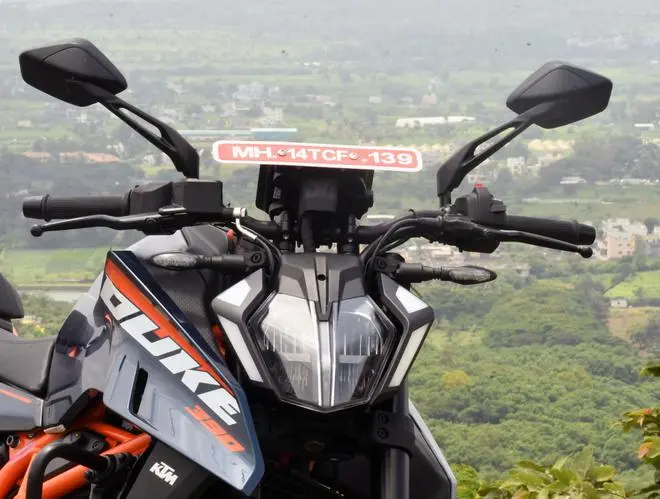
There’s been a lot of focus on light-weighting with multiple small contributions giving the new Duke 390 savings of about four kilos. The 17-inch front and rear rims are similar in size to Gen-2, but are about 1.73 kg lighter, the rear hugger has been done away with (which was about 0.9 kg), and there’s also 0.3kg saved from the elimination of the belly pan, and the dry sump has enabled a kilo of weight savings from the engine.
Features
The 2024 KTM Duke 390 gets a big dose of new features that makes it both more useable and brings it up to date with several new competitors in its displacement class. One of the first features that’s striking is the new digital track screen, as KTM calls it. The TFT screen looks a little larger in size because of the thinner bezels, but similar in orientation to the Gen-2’s display. But the new Duke 390’s 5-inch screen gets many more menu options including lap timers and other racetrack-related telemetry data.
The TFT screen also gets bonded glass like smartphones to ensure that there is no fogging, and it offers better clarity under direct sunlight. The screen acts as the control centre with access to all the motorcycle riding related controls and data. The displayed info is customisable, and the selections can be easily made using the set of four switches on the left-hand side of the handlebar. In addition to the regular set of trip info and rpm, speedo and odo meters, there are quite a few traction and ABS related options to choose from. It also gets Bluetooth connectivity and active tyre pressure monitoring.
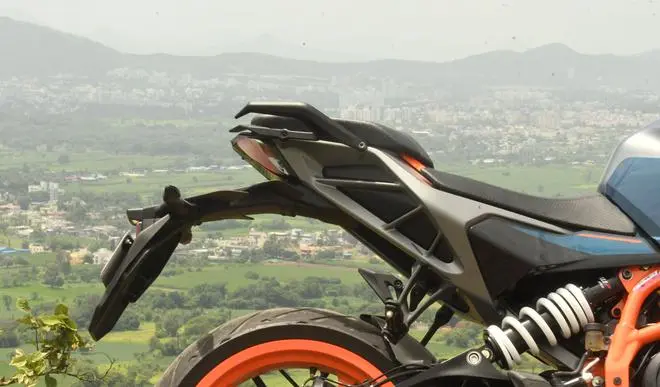
The new KTM Duke 390 gets MTC (traction control kit) including cornering traction control. It also gets three different ride modes - Rain, Street and Track - with varying levels of MTC and ABS interventions. The Rain mode features softer throttle response and more intrusion from MTC and ABS. The selectable ABS modes include Supermoto and there is also launch control. Supermoto ABS was available in Gen-2 also, and traction control has been offered in other KTM bikes of the past, though it is being offered in the Duke 390 for the first time. The new Duke 390 gets a similarly sized 320mm disc brake for the front, but a slightly larger 240mm disc for the rear. The other change that delivers both an ergonomics advantage and a minor leg-up in performance is the new radiator, which is curved, offers improved cooling from a 10 per cent increase in surface area than the earlier straight one, and it also takes engine heat away from the rider’s legs.
Performance
The 2024 Duke 390 gets a spanking new engine that delivers more power and torque lower down in the engine-rpm range. The 399cc (up from Gen-2’s 373cc) mill delivers peak power of 46PS at 8,500rpm and generates a maximum torque of 39Nm at 6,500rpm. The engine offers a segment leading power-to-weight ratio of 273PS per tonne (up 20PS from Gen-2). There has also been an improvement in the 0-60kmph sprint performance, which is down to 2.4 seconds from 2.8 seconds for the Gen-2 KTM Duke 390. Bajaj-KTM officials claim that in the new Gen-3 Duke 390, about 80 per cent of the peak torque (close to 30Nm) is available early at about 5,000rpm, comparatively this used to come in by 6000rpm in the outgoing model. A minor change in the engine’s compression ratio has also been done and it is now at 12.71.
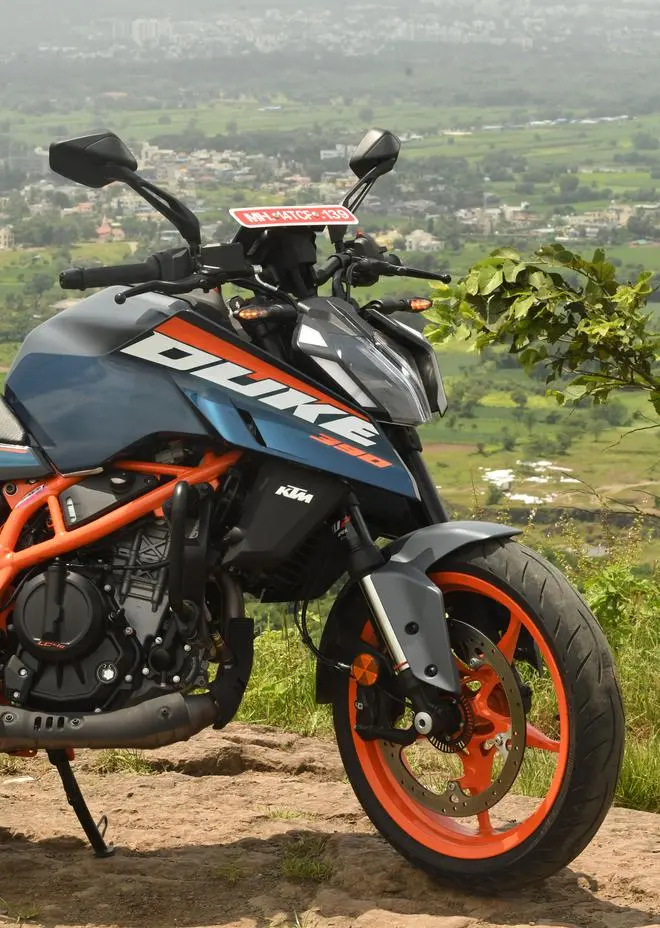
This engine is tuned for easy high-revving performance, and it feels like it is more comfortable staying in the top half of the rpm-band rather than the lower. There is more power and torque available at any point in the rev-band even though the incremental performance from the slightly larger displacement engine is only about 7 per cent.
The new Duke 390 easily crosses a top speed of 160kmph on the long straight at Bajaj’s test track within the Chakan plant. All KTM Duke 390s of the past have had their share of vibrations and this new one too sends up quite a lot of vibrations to the handlebar and the seat from as low as 75kmph. Much of this is not the nerve-tingling intrusive kind. And then there is a speed range in the early 3-digits when the vibrations smoothen out a bit, before setting back in again once the speedo reading crosses 120kmph.
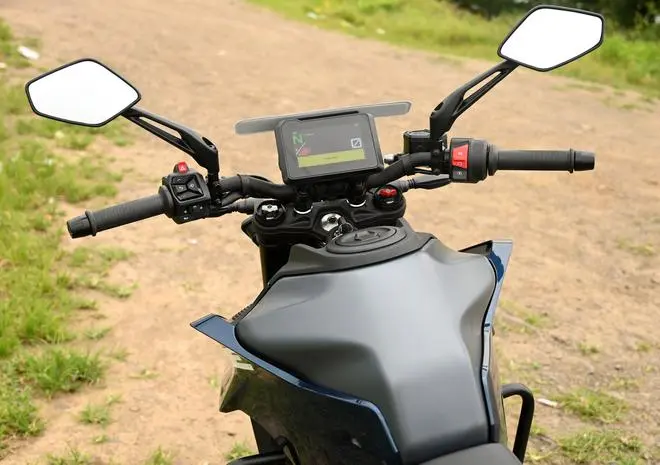
The Gen-2 Duke 390 was offered with a quick shifter gearbox. In the new Duke 390, the bidirectional quick shifter allows swift gear selection on the go without using the clutch, and it does its job well on the track, even though it is not as slick as the TVS Apache RTR 310’s unit. However, while riding on the road, the bidirectional quick shifter felt a little jerky on occasion and my test mule stalled a couple of times.
Bottom Line

The riding position is spot on and the way I could feel connected to the bike on the track is a special feeling in the new Duke 390. It also gave me a lot more confidence to lean into corners. The Gen-3 continues to sport Metzeler Sportec tyres that also add to the level of grip and balance into turns and corners. Thankfully, traction control and cornering traction control weren’t too aggressive even on loose gravel.
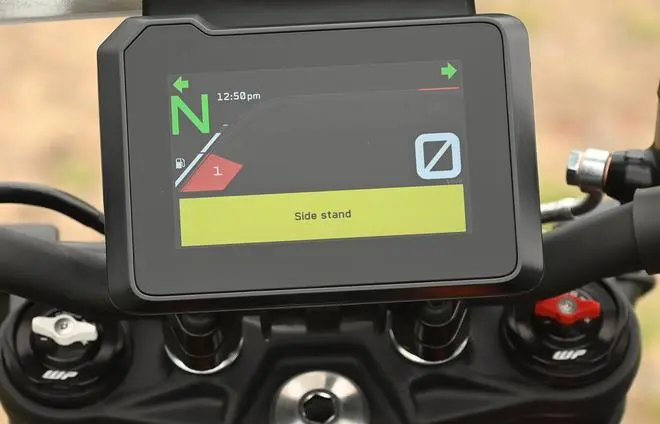
One of the first features that’s striking is the new digital track screen, as KTM calls it. The 5-inch screen gets many menu options including lap timers and other racetrack-related telemetry data | Photo Credit: BIJOY GHOSH
For the suspension, the 2024 Duke 390 gets upside down forks for the front with 5-step compression and 5-step rebound adjustment and the rear monoshock gets 5-step preload and rebound adjustment. So finding an ideal, personalised setting for the rider shouldn’t be a problem. My test mule’s default mid-setting returned a fairly cushy ride in city, without much of a compromise on track. The new third-gen KTM Duke 390 has been priced at about ₹3.11 lakh. At about ₹13,000 more than its predecessor, you get a lot more kit with the promise of even better all-round performance.




